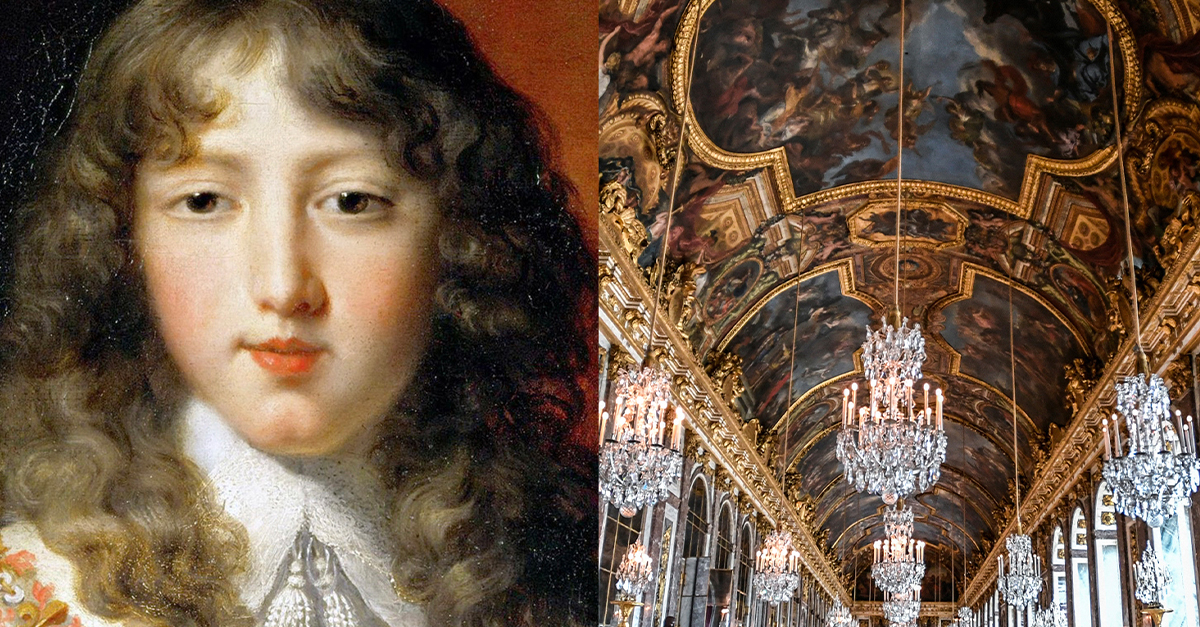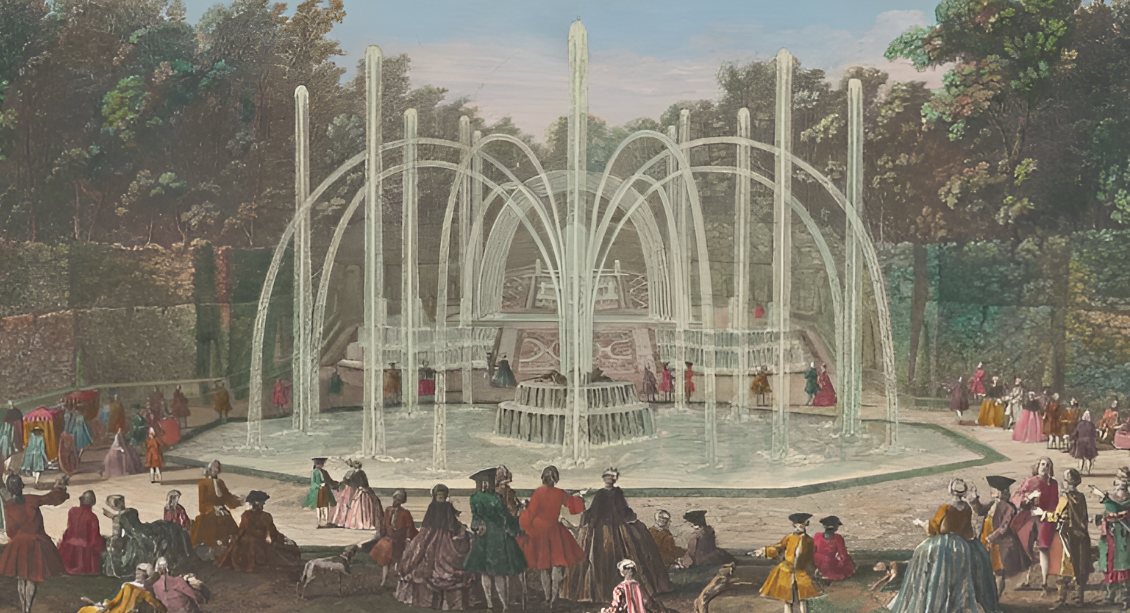The Most Stunning Palace On Earth
The Palace of Versailles is one of the most opulent palaces in the world—but all that glitters is not gold. Though it continues to draw around 15 million tourists every year, the beloved heritage site has a rich and shockingly dark history.
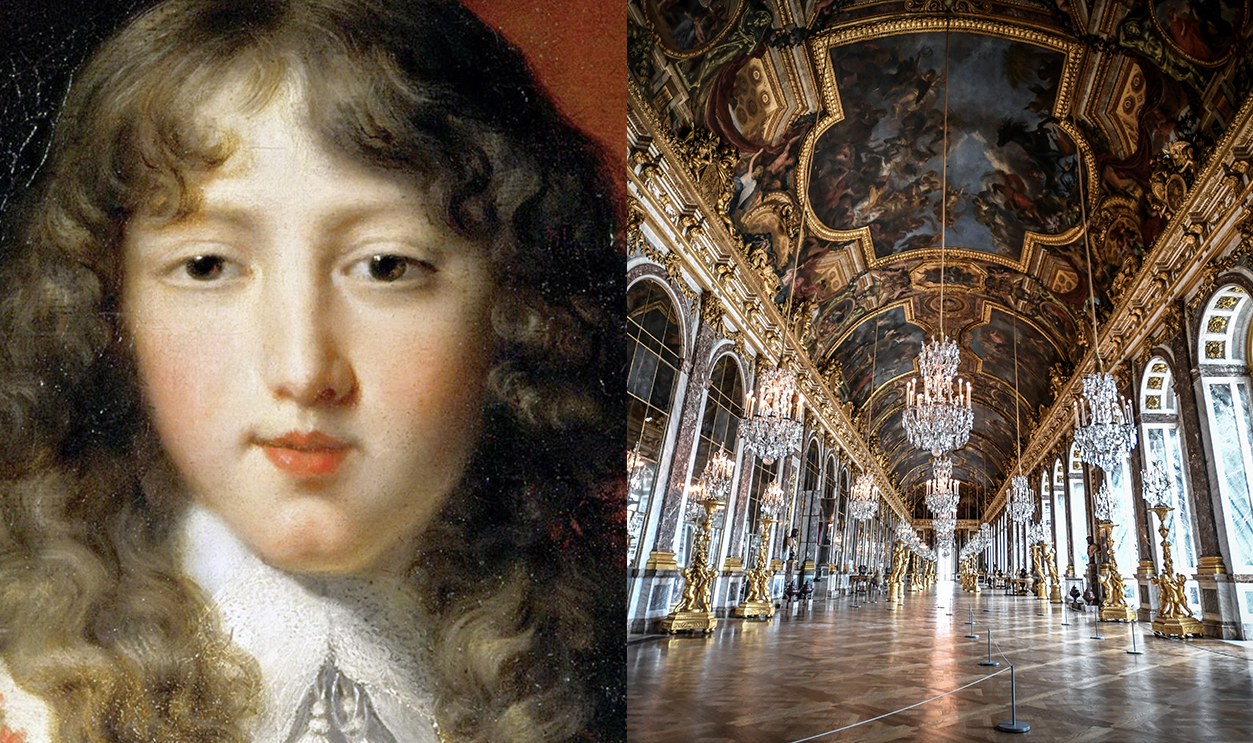
Over 200 Films Have Been Shot On Site
If you haven't seen the Palace of Versailles in person, there's a good chance you've seen its glittering Hall of Mirrors in a history textbook, or perhaps in one of the many films that have been shot there.
Since 1904, it has hosted over 200 film shoots, welcoming the artistic visions of directors like Vincente Minelli and Sofia Coppola, among many others—and for good reason.
Humble Beginnings
There's no doubt that the awe-inspiring interiors are a feast for the eyes, but to truly understand Versailles' lasting importance, we must first investigate its surprisingly humble beginnings. Let's rewind to 1623—when the king of France was Louis XIII.
 Museum of the History of France, Wikimedia Commons
Museum of the History of France, Wikimedia Commons
Not Fit For A King
During Louis XIII's reign, nobody could have foreseen that one of the world's most gorgeous estates would one day rise out of a wooded wetland. In fact, his court cast a disdainful eye over the site which was located close to the village of Versailles.
Here, the king constructed a simple hunting lodge. But most believed that it was unfit for royalty.
It "Would Not Inspire Vanity"
A courtier named François de Bassompierre went so far as to describe the king's hunting lodge in a brutal way: He wrote that it "would not inspire vanity in even the simplest gentleman". Of course, the fate of this site would ultimately inspire all the vanity in the world.
The "Sun King" Takes The Throne
By the time the king passed in 1643, the hunting lodge at Versailles had been replaced by a château. His heir—four-year-old Louis XIV—was on track to becoming the famous "Sun King," and would eventually transform his father's unpresuming château into a palace worthy of the king's absolute power.
But what was the initial spark that drove Louis XIV to commission the construction of Versailles?
 Hyacinthe Rigaud, CC BY-SA 4.0, Wikimedia Commons
Hyacinthe Rigaud, CC BY-SA 4.0, Wikimedia Commons
A Brilliant Festival
In 1661, Louis XIV visited the Château de Vaux-le-Vicomte, attending a lavish festival thrown by Nicolas Fouquet. The wealth on display was absolutely jaw-dropping and certainly raised red flags.
Fouquet, the Superintendent of Finances, could only afford such grandness due to his proclivity for dipping his greedy fingers into government funds.
 PMRMaeyaert, CC BY-SA 3.0, Wikimedia Commons
PMRMaeyaert, CC BY-SA 3.0, Wikimedia Commons
The Power Of Wealth
Though Fouquet's corrupt dealings landed him behind bars, his gorgeous festival at Vaux-le-Vicomte planted a seed in Louis XIV's mind—one that would change the course of French history forever.
 Unknown Author, Wikimedia Commons
Unknown Author, Wikimedia Commons
He Wanted It For Himself
Louis may not have been impressed with his host, but he was absolutely impressed by the overwhelming glory of Vaux-le-Vicomte—so much so that he hired those responsible for it for his own project.
 Zairon, CC BY-SA 4.0, Wikimedia Commons
Zairon, CC BY-SA 4.0, Wikimedia Commons
Hiring The Perfect Workers
These skilled workers included: the court architect Louis Le Vau, the painter Charles Le Brun, and the royal gardener André Le Nôtre. This was the beginning of the Palace of Versailles—what would one day become the king's permanent residence.
 Pierre Patel, Wikimedia Commons
Pierre Patel, Wikimedia Commons
There Are 2,300 Rooms
The end result of this project was a staggering example of French Baroque architecture. As of today, the palace boasts an outrageous number of rooms—2,300 to be exact—which cover an area of 63,154 square meters.
What Was It Really Like To Live At Versailles?
Though a guided tour of the estate makes it seem like a royal utopia, one of the palace's greatest secrets is that the conditions in the 17th century left much to be desired. Let's do a deep dive into what it was really like to live at the Palace of Versailles.
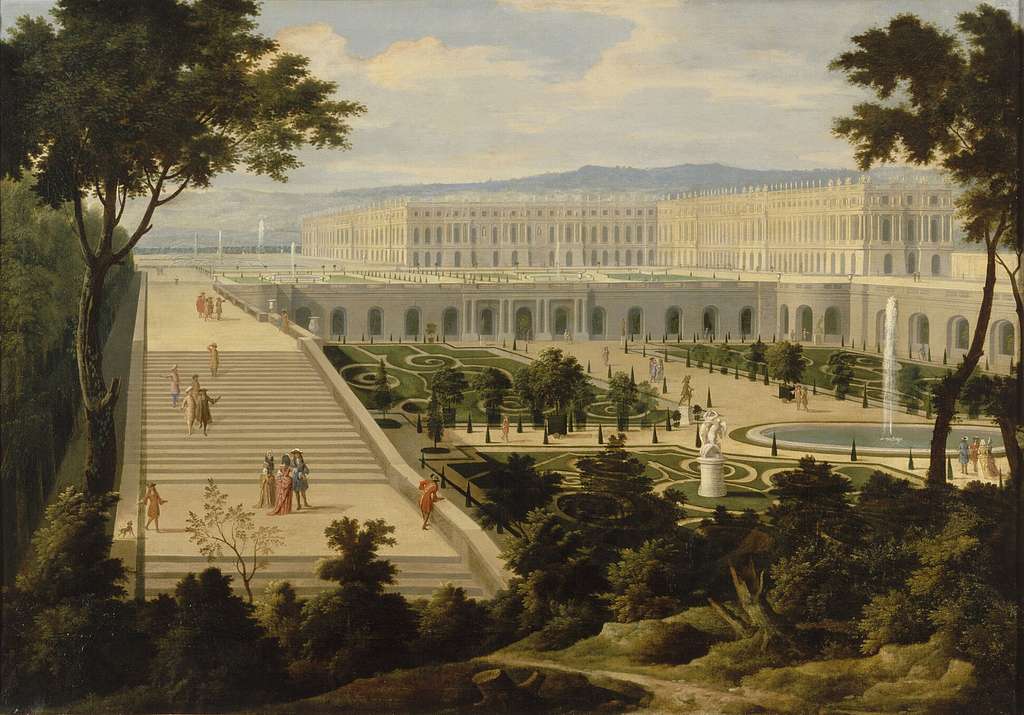 Palace of Versailles, Wikimedia Commons
Palace of Versailles, Wikimedia Commons
Strict Rituals
To live at the Palace of Versailles was to be shackled to a strict ritual. Take, for instance, the king's lever—the custom of simply rising out of bed in the morning became a full-blown performance.
 Wellcome Images, CC BY 4.0, Wikimedia Commons
Wellcome Images, CC BY 4.0, Wikimedia Commons
Everyone Had A Role
During the lever, members of the royal family and important courtiers filled certain roles in preparing the king and queen for the day. These tasks could be incredibly simple, like holding up a mirror for the king to admire himself in or presenting him with specific articles of clothing. And that wasn't all.
 Adam Frans van der Meulen, Wikimedia Commons
Adam Frans van der Meulen, Wikimedia Commons
A Daily Spectacle
Additionally, a similar ceremony occurred at night to prepare the king for bed. There was no such thing as real privacy here as an overwhelming crowd of up to 100 people would attend these proceedings.
One courtier confessed that one should "be absent as little as possible at the king's lever". Attending these rituals could help nobles make their presence better known at court.
 Claude-Guy Hallé, Wikimedia Commons
Claude-Guy Hallé, Wikimedia Commons
A Special Dress Code
Not only did courtiers have to help the king dress, but they themselves had to adhere to a rigid dress code. Louis XIV was a very particular man and wanted things done his way.
He insisted that members of his court wear specific garments depending on the event or time of day. For instance, during suppertime, the men had to eat while wearing their hats.
 Antoine Dieu, Wikimedia Commons
Antoine Dieu, Wikimedia Commons
Uncomfortable Outfits
Overall, the clothes people wore at Versailles were not comfortable at all. Yes, the gorgeous silks and suffocating dresses may have been pleasing to gaze upon, but that didn't mean those wearing them weren't itching to shed all those layers. However, like everything about Versailles, there wasn't much one could do but play by the rules... or suffer the consequences.
He Set His Son's Clothes On Fire
King Louis XIV was quite passionate about his loyalty to French textile industries. He believed in supporting French fashion and the artists behind the clothes—so much so that when he discovered that his son had worn something not made by a French designer, he set the outfit on fire.
What Was Hygiene Like?
With its luscious gardens and gilded rooms, the Palace of Versailles may have looked like the image of wealth on the surface—but the gnarly truth was that its smell didn't always match the way it looked. Take a deep breath, because we're about to learn all about hygiene at Versailles.
 Adam Parelle, Wikimedia Commons
Adam Parelle, Wikimedia Commons
A Distaste For Hot Water
Unfortunately, most 17th-century French folks believed that using hot water was extremely unhealthy.
According to the book Louis XIV: The Real Sun King, by Aurora von Goeth and Jules Harper, "The common belief was that warm water weakened the body and widened the pores, thus allowing diseases to enter. People everywhere, not just in France, found it much safer and better for the health to have a quick wash than soaking in a tub".
 After Sébastien Bourdon, CC BY 4.0, Wikimedia Commons
After Sébastien Bourdon, CC BY 4.0, Wikimedia Commons
The King Only Bathed Twice
Even King Louis XIV rarely bathed himself. Reportedly, he only had two baths over the course of his 76 years. However, not all was lost for the Sun King.
He, at least, paid some attention to his hygiene—cleaning his hands in the morning, using a towel to wash himself, and applying perfume. Then, there was the sticky matter of using the toilet...
 Workshop of Claude Lefèbvre, Wikimedia Commons
Workshop of Claude Lefèbvre, Wikimedia Commons
The King's Not-So-Private Commode
Like many things in Louis XIV's life, his time on the toilet wasn't usually private. While doing his business, it was quite normal for him to invite guests to accompany him. And remember, this wasn't a flushing toilet, but simply a special room with a chamber pot.
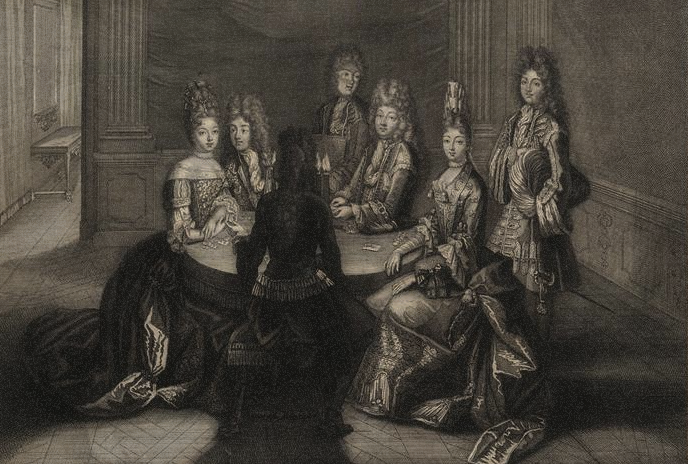 Trouvain Antoine, Wikimedia Commons
Trouvain Antoine, Wikimedia Commons
Chamber Pot Privileges
The king wasn't the only one to have a private commode. If a noble enjoyed a high spot in the court's hierarchy, they too likely had their own chamber pot. However, not everyone was so lucky.
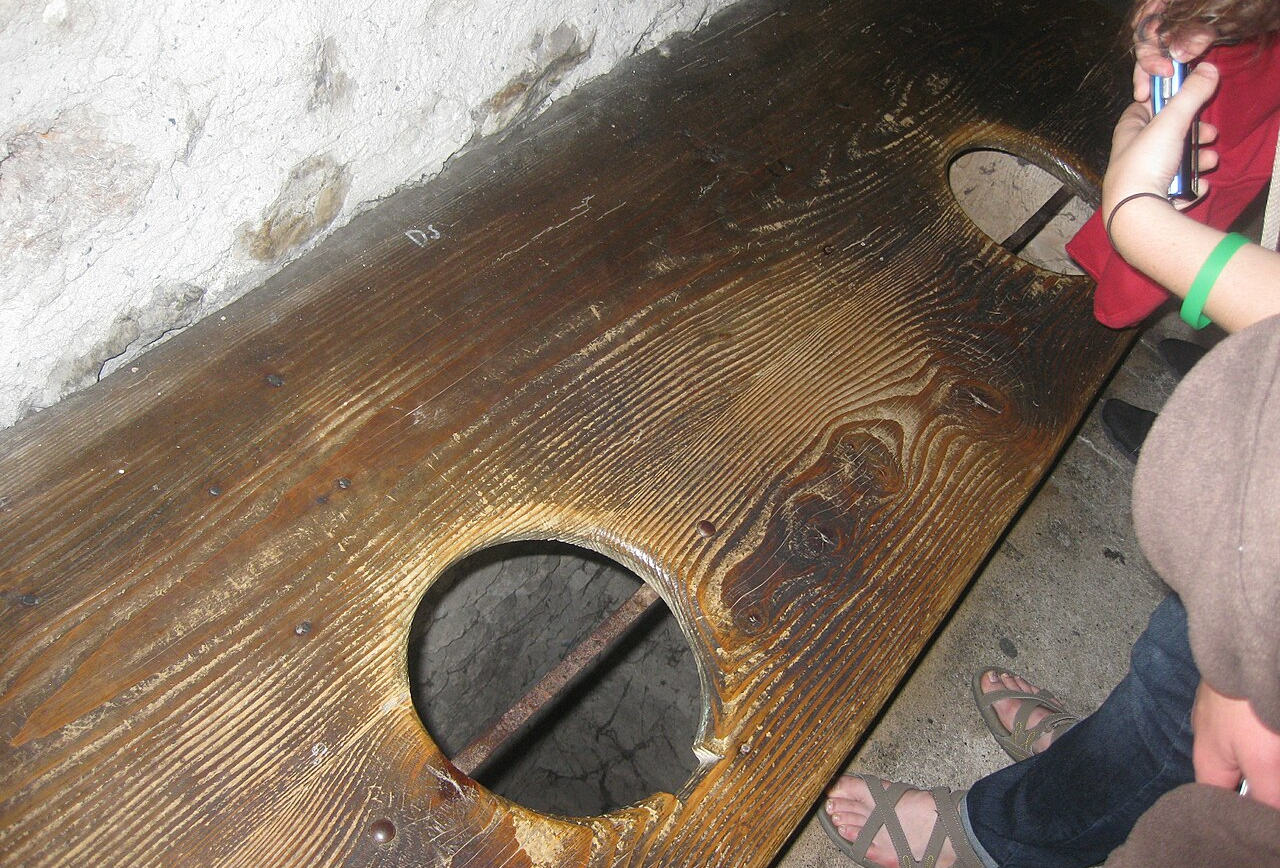 Barthdqp, CC BY-SA 3.0, Wikimedia Commons
Barthdqp, CC BY-SA 3.0, Wikimedia Commons
There Were Too Many People
Sure, there were chamber pots, but the question of whether there were enough of them to go around was another matter altogether. Keep in mind that Versailles often hosted over 10,000 people. This included royals, nobles, government workers, officers, and servants.
There Weren't Enough Latrines
You see, in addition to those personal chamber pots, there were also latrines made available to the public. But they just couldn't keep up with the high demand—and the sheer amount of sewage caused these latrines to overflow.
In turn, this caused a putrid nightmare with the refuse soaking into the floors, and even oozing into adjacent rooms. But it gets worse.
 Père Igor, CC BY-SA 3.0, Wikimedia Commons
Père Igor, CC BY-SA 3.0, Wikimedia Commons
Human Waste Soared Through The Air
It seems that the dark truth about the Palace of Versailles was that it had a human excrement problem. Chamber pots were just thrown out of windows, and not even the royals were safe from these unceremonious dumpings.
 Koninklijke Bibliotheek, Wikimedia Commons
Koninklijke Bibliotheek, Wikimedia Commons
Marie Antoinette's Smelly Debacle
Reportedly, even Queen Marie Antoinette got nailed by the contents of a chamber pot while she resided at the palace. However, flying human waste wasn't even the most shocking sight.
 Yann Caradec, CC BY-SA 2.0, Wikimedia Commons
Yann Caradec, CC BY-SA 2.0, Wikimedia Commons
No Toilet, No Problem
Many courtiers at the palace simply gave up on trying to locate a latrine to do their business and popped a squat wherever they wanted.
One account made by Princess Elizabeth Charlotte in 1702 drives this point home: "... the people stationed in the galleries in front of our room piss in all the corners. It is impossible to leave one's apartments without seeing somebody pissing". However, when it comes to firsthand accounts, this isn't even the worst one.
 Adam Parelle, Wikimedia Commons
Adam Parelle, Wikimedia Commons
The Smell Was Inescapable
One description of life at the Palace of Versailles proves just how nasty it truly was: "The unpleasant odors in the park, gardens, even the chateau, make one's gorge rise. The communicating passages, courtyards, buildings in the wings, corridors, are full of urine and feces; a pork butcher actually sticks and roasts his pigs at the bottom of the ministers' wing every morning; the avenue Saint-Cloud is covered with stagnant water and dead cats".
Faced with a very smelly situation, courtiers came up with a way to combat it.
 Alexandre Jean Noël, CC0, Wikimedia Commons
Alexandre Jean Noël, CC0, Wikimedia Commons
Perfume Was The Worst Solution
For those living at the palace, the best way to get rid of a bad scent was to bury it in a good scent—or, at least, try to. Courtiers covered themselves in perfume, but unfortunately, mixing two potent scents likely exacerbated the problem.
There Were Feral Cats Everywhere
Cats also took up residence at the palace. Some of them were pets, while others were feral. With so much waste, rodents abounded, which, in turn, lured cats onto the estate. But these beloved creatures only made hygiene conditions even worse.
Cats Were Just As Unhygienic As Their Owners
Just like their owners, these cats were doing their business wherever they pleased, and they also bit the dust wherever they pleased—their furry bodies littering the streets. However, they weren't the only critters to make a nuisance of themselves.
 Jean-Baptiste Oudry, Wikimedia Commons
Jean-Baptiste Oudry, Wikimedia Commons
Elaborate Wigs Crawled With Lice
Enter: lice. Thanks to Louis XIV, wigs were extremely trendy during his reign. After all, he wore one himself to disguise his balding. However, hair and wigs were also the perfect breeding ground for lice.
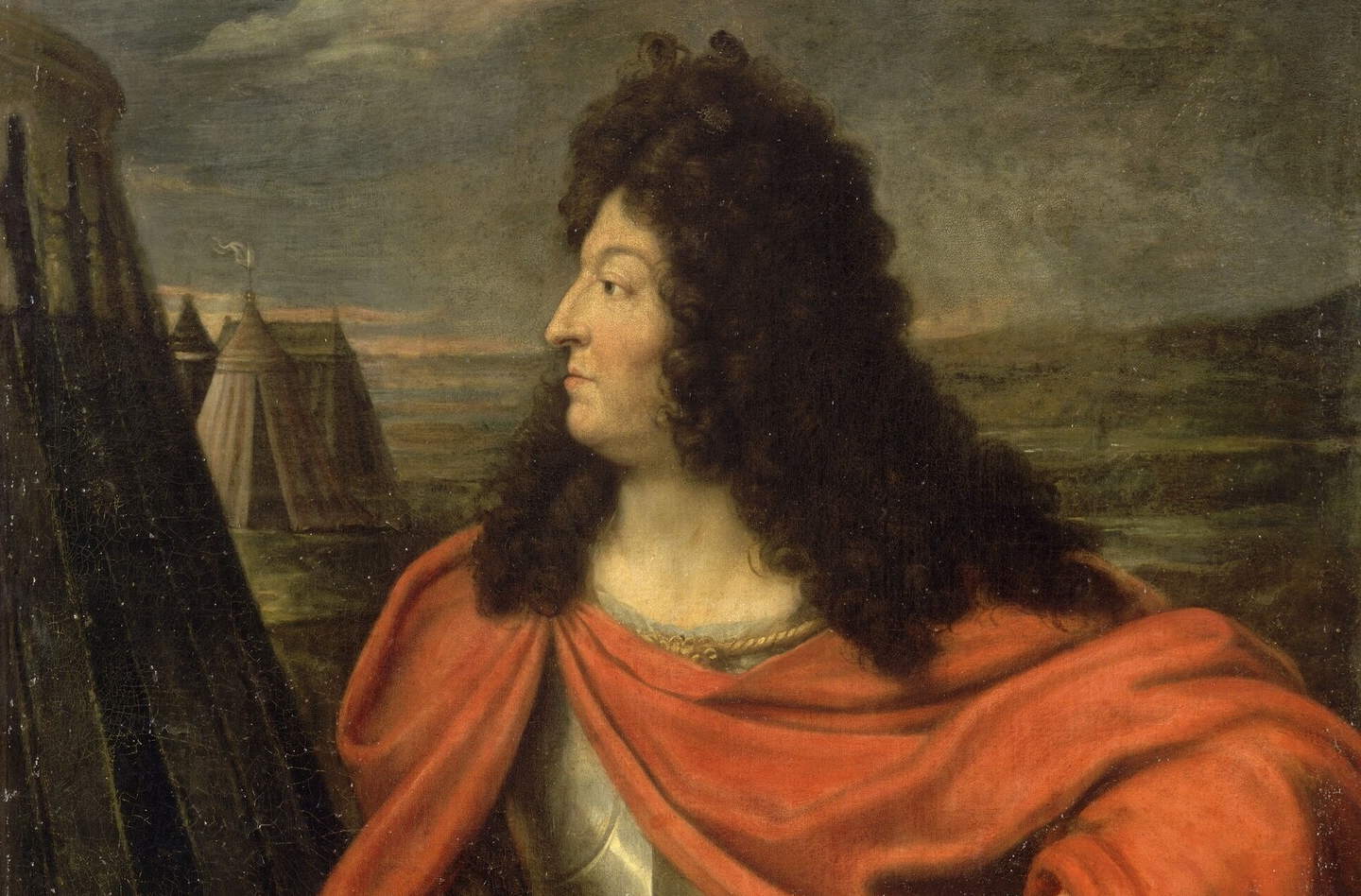 Pierre Mignard I, Wikimedia Commons
Pierre Mignard I, Wikimedia Commons
They Had To Boil Their Wigs
Most men actually shaved their head and wore a wig, which was the easier way to deal with lice infestations. One wouldn't have to go through the painstaking process of plucking lice out of their hair—but instead, only had to boil their wigs. Women, on the other hand, usually had full heads of hair, making lice far more of a problem.
 Google Cultural Institute, Picryl
Google Cultural Institute, Picryl
The Courtiers Got Sick
Even sitting down to enjoy a meal at Versailles wasn't safe. The food preparation standards would have likely raised all the red flags today. Considering the fact that many of the courtiers suffered bouts of intestinal parasites, there's a good chance that things weren't always clean in the kitchen.
However, even Louis XIV had some horrific experiences that stemmed from the food he ate.
 Jean-Auguste-Dominique Ingres, Wikimedia Commons
Jean-Auguste-Dominique Ingres, Wikimedia Commons
The King Had Tapeworms
Though the king himself made a habit of washing his hands, he too endured his fair share of tapeworms. Reportedly, he even passed one that was close to six inches.
The Waste Had Nowhere To Go
Turns out, there's a good reason why the Court of Versailles earned itself such a dismal reputation. You see, it wasn't built on the best foundation, and would have fared much better if it had been close to a flowing river that could move all the waste away from the site. One might also point a finger of blame at King Louis XIV himself.
 Austrian National Library, Picryl
Austrian National Library, Picryl
Louis XIV's Mistake
When Louis decided to stay put at Versailles instead of moving between his royal courts, he placed a massive burden on the caretakers' shoulders. Now, they no longer had periods of respite to devote to deep cleaning the palace and grounds. Instead, garbage and waste began piling up.
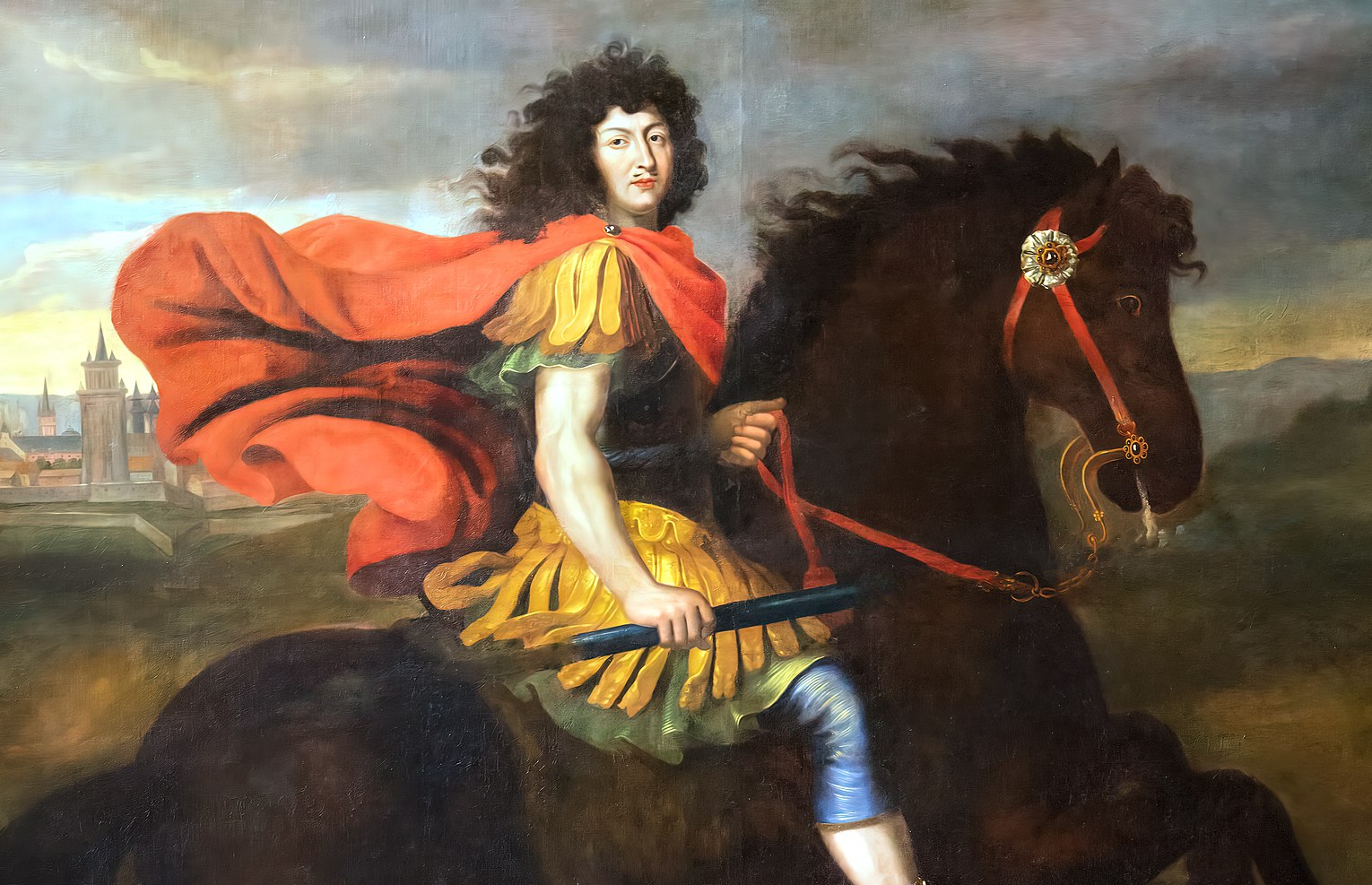 Pierre Mignard I, Wikimedia Commons
Pierre Mignard I, Wikimedia Commons
The Forest Was A Den Of Pleasure
Not only was the Palace of Versailles a mess, but the forest around it also hid some scandalous secrets. When the court permanently moved to Versailles, it attracted people from all classes—and the forest became the perfect place for them to intermingle and copulate.
 ToucanWings, CC BY-SA 3.0, Wikimedia Commons
ToucanWings, CC BY-SA 3.0, Wikimedia Commons
The King Called Them Sinners
The forest that bordered the grounds became something of an "open-air brothel," where folks went to satiate their appetites for pleasure. People began accepting money in exchange for intimate services, and this caused the king to label them as sinners.
 Wellcome Images, CC BY 4.0, Wikimedia Commons
Wellcome Images, CC BY 4.0, Wikimedia Commons
He Was The Star Of The Show
There's no getting around it: King Louis XIV was quite the diva. With a title like the Sun King, it's no wonder that he enjoyed the warm glow of attention that came with being on stage. In the case of Versailles, this meant there were productions—ballets and dances that both he and his courtiers were a part of.
 Marot François, Wikimedia Commons
Marot François, Wikimedia Commons
The Gardens Became A Stage For Ballets
The gardens became the location for some of the grandest ballets imaginable. In addition to the dancing, these elaborate productions incorporated art, music, and live animals.
But for Louis, they were also part of a separate agenda.
 Israel Silvestre, Wikimedia Commons
Israel Silvestre, Wikimedia Commons
He Made His Courtiers Do A Little Dance
By making his courtiers participate in these dances, Louis was able to have better control over them. He kept them as busy as possible, therefore preventing them from conspiring amongst themselves and plotting against him.
 VAN DER MEULEN Adam Frans, Wikimedia Commons
VAN DER MEULEN Adam Frans, Wikimedia Commons
The Birth Of An Heir
However, when it came to spectacles at Versailles, perhaps the most uncomfortable one was when the queen, pregnant with a royal heir, finally went into labor. This was not a private occasion—not at all. In fact, the doors were wide open.
 Palace of Versailles, Wikimedia Commons
Palace of Versailles, Wikimedia Commons
Marie Antoinette's First Child
Take, for instance, the birth of Marie Antoinette's first child at Versailles. On December 19, 1778, the queen went into labor. A bell rang out in the palace, which alerted everyone to the special occasion—and soon, courtiers began heading for her apartments.
 Adolf Ulrik Wertmüller, Wikimedia Commons
Adolf Ulrik Wertmüller, Wikimedia Commons
Marie Antoinette Labored With An Audience
A crowd began building in the room where the queen labored, and beyond. Everyone wanted to get a good view of the birth. When Marie Antoinette welcomed her little girl, Marie-Therese, the commotion of the onlookers reached such a height that the queen lost consciousness.
 Charles Le Clercq, Wikimedia Commons
Charles Le Clercq, Wikimedia Commons
The Crowds Caused Her To Faint
In the book Marie Antoinette: The Journey, Antonia Fraser writes, “The press of people, the heat and the lack of fresh air in the rooms, whose windows had been sealed up for months against the winter cold, was too much for her after her twelve-hour labour".
 Élisabeth Louise Vigée Le Brun, CC0, Wikimedia Commons
Élisabeth Louise Vigée Le Brun, CC0, Wikimedia Commons
The Power Of A Pest
Knowing how nasty Versailles could be, it's no wonder that a pest at the palace became the inspiration for the name of a color. Have you ever heard of the color puce? This reddish-brown color comes with an unsavory origin story.
 Austrian National Library, Picryl
Austrian National Library, Picryl
The Color Of A Flea
In 1775, Marie Antoinette put on a dress that had a very unique color. It was Louis XVI who pointed it out, stating that it was similar to the color of a flea—"une puce". However, this wasn't the only color at Versailles to be given an unfortunate name.
 Jean-Baptiste André Gautier-Dagoty, Wikimedia Commons
Jean-Baptiste André Gautier-Dagoty, Wikimedia Commons
The Courtiers Wore Brown
In 1781, Marie Antoinette gave birth to the royal heir. As a nod to the new baby, the courtiers chose to wear a very specific color, which they named "caca-dauphin". Yes, it's exactly as it sounds—this meant "dauphin poop".
Based on our earlier exploration of hygiene, this was a color folks would have been quite familiar with even before the dauphin arrived.
 Nationalmuseum Stockholm, Picryl
Nationalmuseum Stockholm, Picryl
The French People Hated Versailles
Now, despite the stinky truth about Versailles, it still represented the excess of the royal courts. During the time of King Louis XVI's reign, the people of France came to resent how the rich lived in luxury while the poor starved.
 Le Nain Brothers, Wikimedia Commons
Le Nain Brothers, Wikimedia Commons
They Turned Their Backs On The Queen
French citizens were especially critical of Marie Antoinette, who eventually garnered herself a dangerous reputation. People thought their queen spent too much money on frivolous desires, like fashion and gambling. Therefore, when the French Revolution kicked off in 1789, Versailles became an easy target.
 William Hamilton, Wikimedia Commons
William Hamilton, Wikimedia Commons
They Destroyed The Golden Gate
Versailles had a stunning, golden front gate, which suffered the consequences of the people's wrath. The revolutionary government gave the order to have it completely demolished. It wasn't until 2008, that a restoration project brought the gate back to life—constructed using 100,000 gold leaves.
 Ali Sabbagh, CC0, Wikimedia Commons
Ali Sabbagh, CC0, Wikimedia Commons

